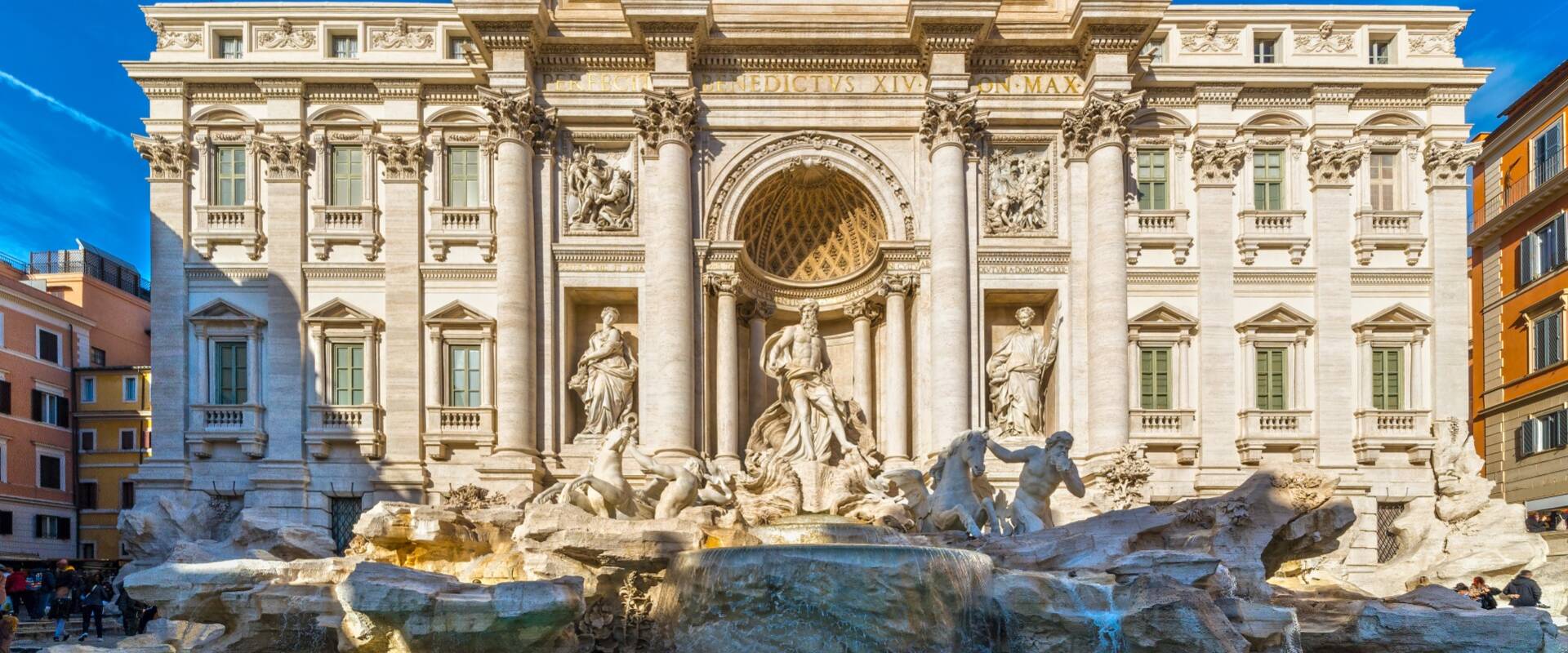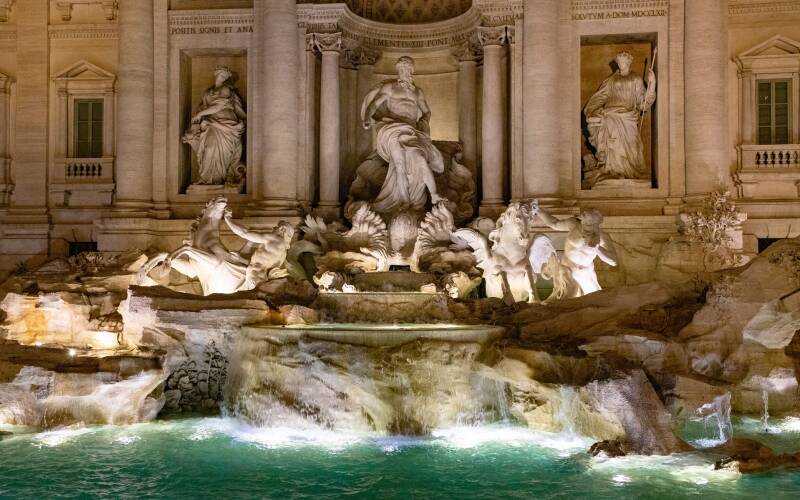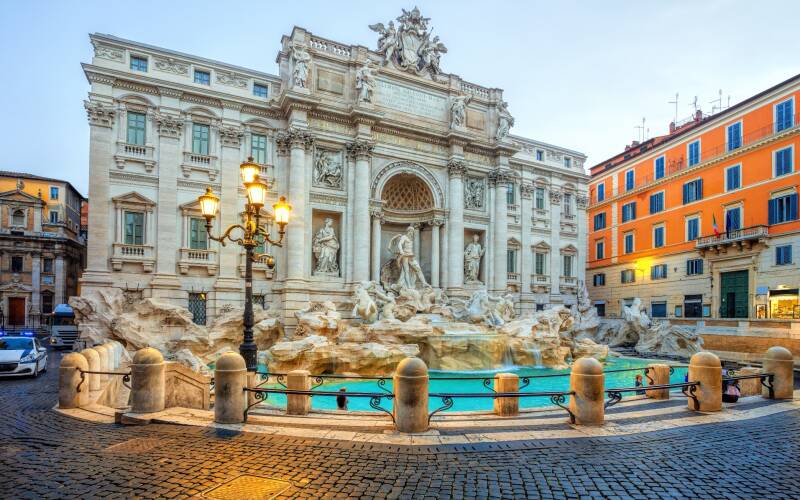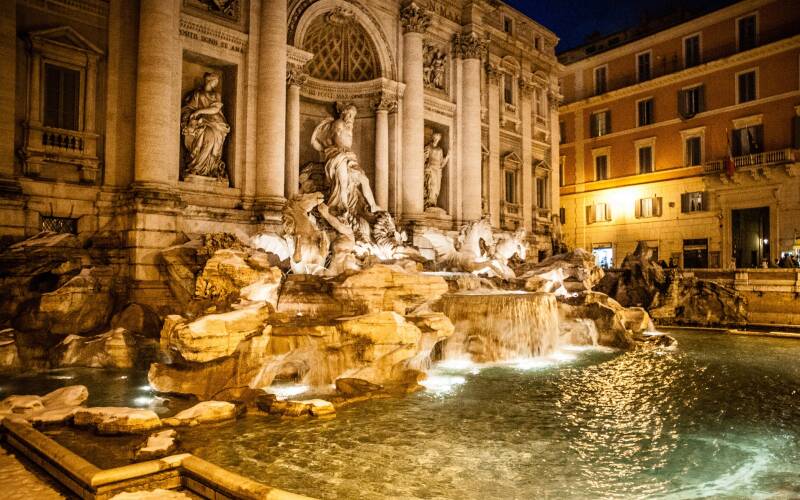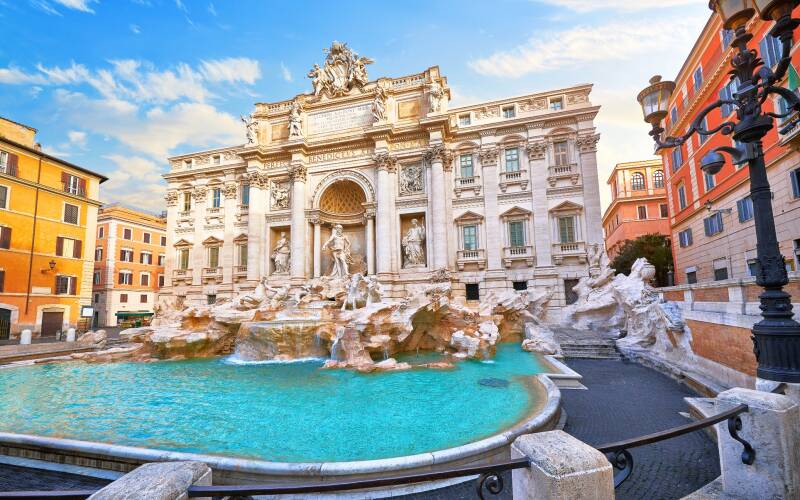- Search magazine...
- Magazine by Category
- Magazine by Region
- article detail
- Search magazine...
- Magazine by Category
- Magazine by Region
- article detail
It represents the eternal tribute to the water, with its imposing architecture expressing the value of water as a symbol of abundance and health.
The fountain has become a world-renowned eternal myth thanks to the director Federico Fellini, with the movie “La Dolce Vita, when he made the Junoesque diva Anita Ekberg walk sinuously in the fountain under the eyes of a dreamy Mastroianni.
La Fontana di Trevi is located in the historic centre of Rome, reachable on foot along rather narrow streets. Its magic, however, is revealed even before arriving there, thanks to the sound of water that attracts people like the song of a siren. The square hosting this magnificent fountain appears modest in size compared to its majesty.
Here, every day of the year, the same scene is repeated: the gaze of the multitude of passers-by is attracted by so much splendour, captivated by the shapes, the sound and the movement of the water that animates the entire monument. Every day, tourists stop by, take pictures and toss a wishing coin.
The toss of the coin is an internationally known ritual that involves anyone who finds himself in front of the fountain, a legacy of tradition that promises the possibility of returning to Rome. While, in order to make the finding of the true love dream come true, just toss two coins, and if you really want to get married, just get to three coins, and that is all!
This ritual is so popular that about 3000 euros are fished out of the water every day, which are then donated to charity.
The whole scene of this iconic monument is enlivened by the force of water and wind that seems to set the statues and currents in motion, giving an intense and vital evocation of the force of nature. A tumultuous spring that seems to gush from the ground and occupy the square in the equilibrium of space with the background.
The ocean god occupies the central part, standing on a shell-shaped chariot pulled by seahorses. Half-horse and half-fish creatures are the symbols of the changing states of the tides, from calm to storm, with two newts to guide them.
On the sides, it is possible to admire the statues of Abundance and Health, while above them are the two bas-reliefs depicting Agrippa ordering the construction of the aqueduct and a girl showing the Roman soldiers where to find the source of water.
The history of this Baroque-style fountain is closely connected to that of the construction of the Vergine aqueduct, which is the arrival point of one of the aqueducts that supplied Rome with water, as well as the exact spot where the fountain is located.
It was the sixth Roman aqueduct and today the only one still functioning, channelling the water for over 20 kilometres to the Fountain.
Dating back to the times of Emperor Augustus, the fountain blends elements such as marble and water together in a unique harmony of soft lines, perfectly balanced and embodied in the evocative setting of the elegant buildings of the historic centre. Its overwhelming beauty, its legends and eternal fame made immortal by the cinema make it one of the most recognizable icons of Rome, a must-see for anyone visiting the city.
Discover your perfect escape in Italy and click here to explore our exclusive selection of luxury villas for rent.
Copyright © Home in Italy. All rights reserved.


